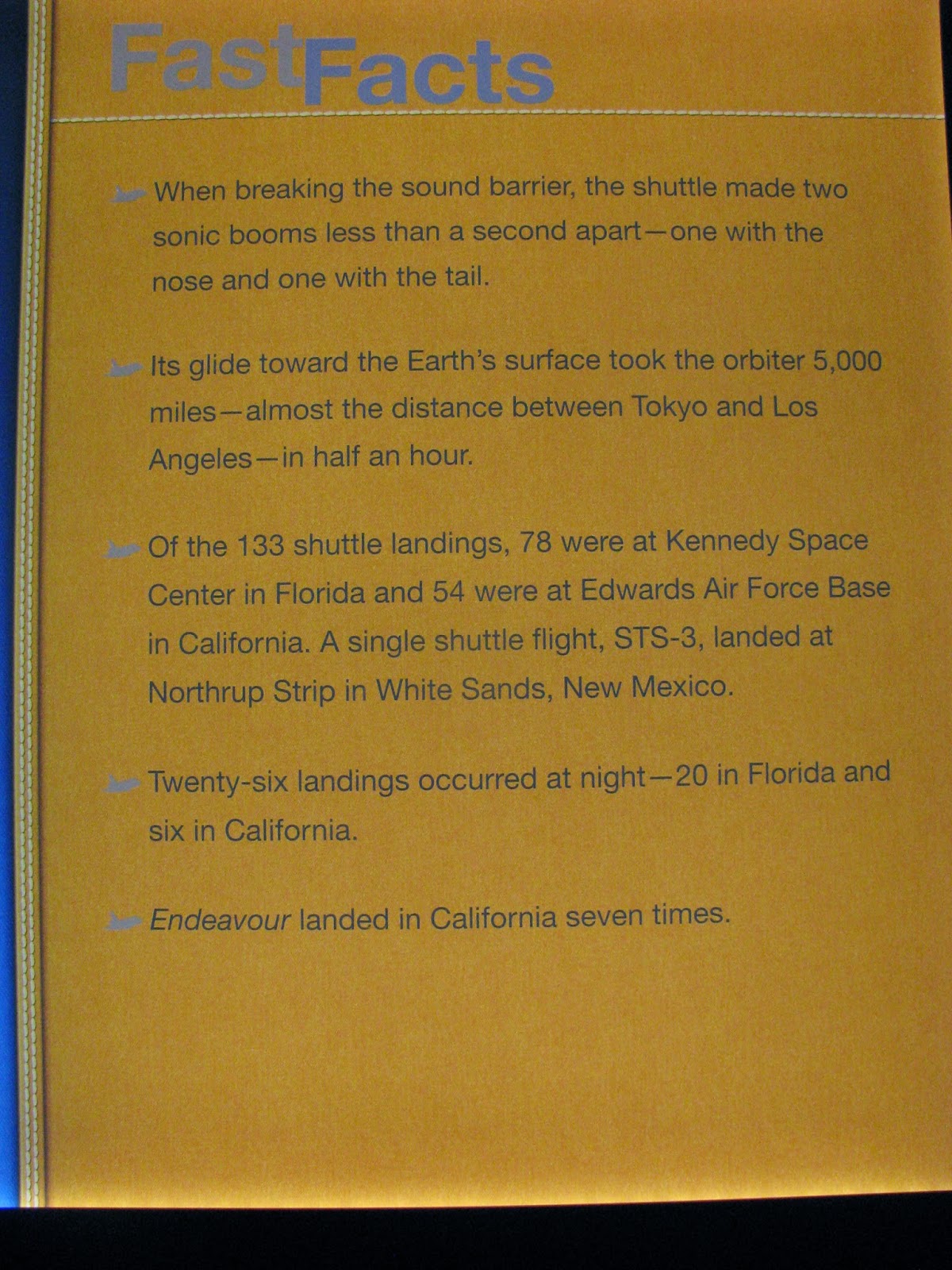The Best $2 You Can Spend
Today we took a trip out to the California Science Center in Los Angeles.
To book the tickets for the Endeavor costs $2 per person for the online "print your ticket at home" service and is worth it so that you do not have to wait in line.
The exhibits are fantastic.
This SR 71 Blackbird is out front.
The Lockheed SR-71 "Blackbird" was an advanced, long-range, Mach 3+ strategic reconnaissance aircraft.[1] It was developed as a black project from the Lockheed A-12 reconnaissance aircraft in the 1960s byLockheed and its Skunk Works division. Clarence "Kelly" Johnson was responsible for many of the design's innovative concepts. During reconnaissance missions, the SR-71 operated at high speeds and altitudes to allow it to outrace threats. If a surface-to-air missile launch was detected, the standard evasive action was simply to accelerate and outfly the missile.[2]
The SR-71 served with the U.S. Air Force from 1964 to 1998. A total of 32 aircraft were built; 12 were lost in accidents, but none lost to enemy action.[3][4] The SR-71 has been given several nicknames, includingBlackbird and Habu.[5] Since 1976, it has held the world record for the fastest air-breathing manned aircraft, a record previously held by the YF-12.[6][7][8
Once inside the building more planes are on display in various flight exhibits.
However, the main purpose of our visit was to see the
So we kind of got inside and headed right for it.
Here's Ron checking out the launch control center.
This was all original equipment donated by Rocketdyne when the program ended.
This control area was designated:
ROSC
Rocketdyne Operational Support Center
From here they could monitor the main engine performance and advise NASA about any malfunctions and the appropriate steps needed for correction.
These are some of the heat resistant tiles on the underside of the shuttle used to protect the vehicle from the extreme temperatures experienced during re-entry. As you can see, each one is numbered to indicate its' position on the vehicle.
Ron checking out the main engine display.
These are some of the most powerful rocket engines ever developed.
The Rocketdyne RS-25, otherwise known as the Space Shuttle Main Engine (SSME), is a liquid-fuel cryogenic rocket engine that was used on NASA's Space Shuttle and is planned to be used on its successor, the Space Launch System. Built in the United States by Rocketdyne, the RS-25 burns cryogenic liquid hydrogen & liquid oxygen propellants, with each engine producing 1,859 kN (418,000 lbf) of thrust at liftoff. Although the RS-25 can trace its heritage back to the 1960s, concerted development of the engine began in the 1970s, with the first flight, STS-1, occurring on April 12, 1981. The RS-25 has undergone several upgrades over its operational history to improve the engine's reliability, safety and maintenance load.
The engine produces a specific impulse (Isp) of 452 seconds (4.43 km/s) in a vacuum, or 366 seconds (3.59 km/s) at sea level, has a mass of approximately 3.5 tonnes (7,700 pounds), and is capable of throttling between 67% and 109% of its rated power level in one-percent increments. The RS-25 operates under temperatures ranging from −253 °C (−423 °F) to 3,315 °C (6,000 °F).[1]
On the Space Shuttle, the RS-25 was used in clusters of three engines mounted in the aft structure of the Orbiter, with fuel being drawn from the external tank. The engines were used for propulsion during the entirety of the spacecraft's ascent, with additional thrust being provided by two solid rocket boosters and the orbiter's two AJ-10-190 Orbital Maneuvering System engines. Following each flight, the engines were removed from the orbiter, inspected and refurbished before being reused on another mission.
So Now You Know!
All in all a wonderful experience.













No comments:
Post a Comment